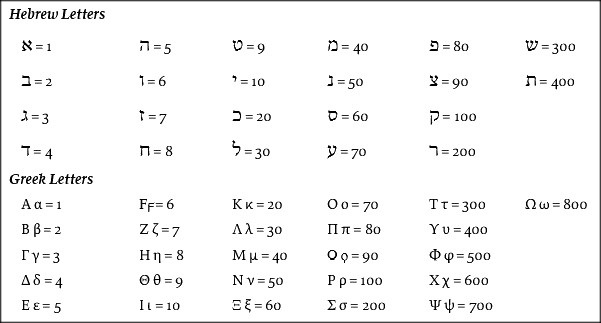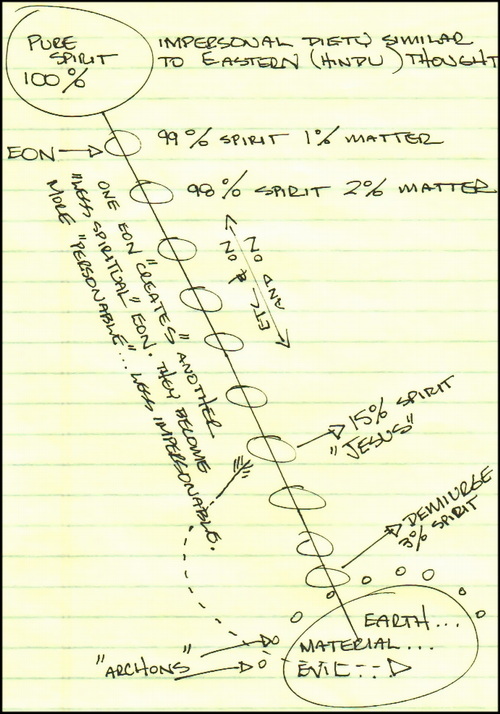Israel faces war both in the North and South, and in this conflict antisemitism is on the rise in every nation. Alliances with Iran and Russia a few years ago unthinkable are now iron clad. Many in Israel and around the world are looking at the prophecies of Ezekiel 38-39 and asking are we in this war or in the precursor to these end times events? Dr. Erez Soref and Dr. Golan Broshi dive into the scripture and the events of our days and seek to answer where we are in this prophetic time.
One For Israel

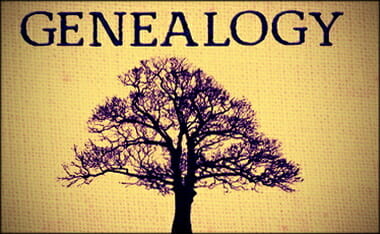
The Genealogies of Jesus | A Supposed Contradiction, Explained
(This was originally posted in May of 2015, updated in Oct of 2022, and Nov 2023)
This first video is the why the genealogies of Christ in Matthew and Luke are important. It is in Hebrew with English text underneath, so you may need a larger home computer screen for it. If the text moves too fast, there is a tool in the lower right of the YouTube video to slow it down. This helps. But this is a powerful video, a must watch. (Video Description) Is Jesus a descendant of the line of David? Or is His lineage full of contradictions as the Rabbis claim?? (This is my 2022 addition)
2022
This is my original post, I will note the addition I will add to it after.
2015
The “Genealogy” of Jesus
Norman Geisler explains the apparent contradiction between Matthew and Luke’s genealogies.
This is one of the more popular examples of a Biblical contradiction that is for the most part brought up by Muslims to show the Bible is a document riddled with problems. However, if one gives this document the same attestation as one gives to any other text of history, say, Livy’s History of Rome or Caesar’s Gallic Wars, then the alleged contradictions disappear. On this test John Warwick Montgomery writes that literary critics still follow Aristotle’s dictum that “the benefit of the doubt is to be given to the document itself, not arrogated by the critic himself.” With this in mind, lets see what some have to say about this “contradiction.”
Matthew 1:1-16 gives the genealogy of Jesus through Joseph, who was himself a descendant of King David. As Joseph’s adopted Son, Jesus became his legal heir, so far as his inheritance was concerned. Notice carefully the wording of verse 16: “And Jacob begat Joseph the husband of Mary, of whom was born Jesus, who is called Christ [messiah]” (NASB). This stands in contrast to the format followed in the preceding verses of the succession of Joseph’s ancestors: “Abraham begat [egennesen] Isaac, and Isaac begat Jacob, etc.” Joseph is not said to have begotten Jesus: rather he is referred to as “the husband of Mary, of whom [Gk. feminine genitive] Jesus was born.”
Luke 3:23-38, on the other hand seems to record the genealogical line of Mary herself, carried all the way back beyond the time of Abraham to Adam and the commencement of the human race. This seems to be implied by the wording of verse 23: “Jesus… being (as was supposed) the son of Joseph.” This “as was supposed” indicates that Jesus was not really the biological son of Joseph, even though this was commonly assumed by the public. It further calls attention to the mother, Mary, who must of necessity have been the sole human parent through whom Jesus could have descended from a line of ancestors. Her genealogy is thereupon listed, starting with Heli, who was actually Joseph’s father-in-law, in contradistinction to Joseph’s own father, Jacob:
And Jesus himself began to be about thirty years of age, being (as was supposed) the son of Joseph, which was the son of Heli – Luke 3:23 [Mary]
And Jacob begat Joseph the husband of Mary – Matthew 1:16 [Joseph]
Mary’s line of descent came through Nathan, a son of Bathsheba (or “Bathshua,” according to 1 Chronicles 3:5), the wife of David. Therefore, Jesus was descended from David naturally through Nathan and legally through Solomon.
The coming Messiah of Israel had to be able to prove this lineage as it was prophesied in the Old Testament that He would in fact be a descendant of David. The Jews kept meticulous records at the temple mount of all the genealogical records of the Hebrew people. This information was “public knowledge,” or, verifiable by even the Pharisees. The Romans destroyed these records in A.D. 70. (This is very important – prophetically speaking – because the Orthodox Jews [as opposed to the Messianic Jews] are still awaiting their Messiah, however, he cannot be traced to David or Abraham! A prerequisite for Messiah clearly stated in the Old Testament.) Also of importance is the fact that Luke is very close to Mary, remember that Jesus gave him charge of her while shortly before he died.
Here is Norman Geisler and Thomas Howe in their book, When Critics Ask: A Popular Handbook on Bible Difficulties, explaining the dealio:
LUKE 3:23 —Why does Luke present a different ancestral tree for Jesus than the one in Matthew?
PROBLEM: Jesus has a different grandfather here in Luke 3:23 (Heli) than He does in Matthew 1:16 (Jacob). Which one is the right one?
SOLUTION: This should be expected, since they are two different lines of ancestors, one traced through His legal father, Joseph and the other through His actual mother, Mary. Matthew gives the official line, since he addresses Jesus’ genealogy to Jewish concerns for the Jewish Messiah’s credentials which required that Messiah come from the seed of Abraham and the line of David (cf. Matt. 1:1). Luke, with a broader Greek audience in view, addresses himself to their interest in Jesus as the Perfect Man (which was the quest of Greek thought). Thus, he traces Jesus back to the first man, Adam (Luke 3:38).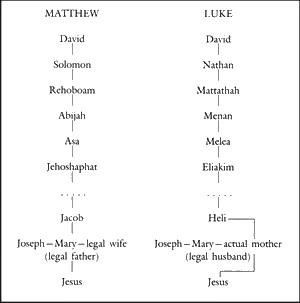
That Matthew gives Jesus’ paternal genealogy and Luke his maternal genealogy is further supported by several facts. First of all, while both lines trace Christ to David, each is through a different son of David. Matthew traces Jesus through Joseph (his legal father) to David’s son, Solomon the king, by whom Christ rightfully inherited the throne of David (cf. 2 Sam. 7:12ff). Luke’s purpose, on the other hand, is to show Christ as an actual human. So he traces Christ to David’s son, Nathan, through his actual mother, Mary, through whom He can rightfully claim to be fully human, the redeemer of humanity.
Further, Luke does not say that he is giving Jesus’ genealogy through Joseph. Rather, he notes that Jesus was “as was supposed” (Luke 3:23) the son of Joseph, while He was actually the son of Mary. Also, that Luke would record Mary’s genealogy fits with his interest as a doctor in mothers and birth and with his emphasis on women in his Gospel which has been called “the Gospel for Women.”
Finally, the fact that the two genealogies have some names in common (such as Shealtiel and Zerubbabel, Matt. 1:12; cf. Luke 3:27) does not prove they are the same genealogy for two reasons. One, these are not uncommon names. Further, even the same genealogy (Luke’s) has a repeat of the names Joseph and Judah (3: 26, 30).
Matthew and Luke each record a different Genealogy for the family of Jesus, so is this a Bible contradiction that cannot be resolved? This video addresses this Supposed Bible Contradiction.
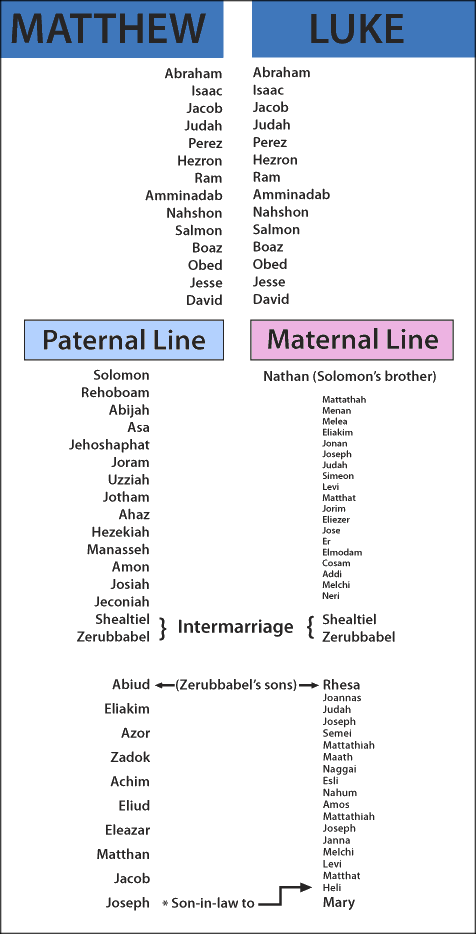 This a a partial excerpt from a great article over
This a a partial excerpt from a great article over
at APOLOGETIC PRESS, enjoy. Click to enlarge:
…First, Matthew reported the lineage of Christ only back to Abraham; Luke traced it all the way back to Adam. Second, Matthew used the expression “begat;” Luke used the expression “son of,” which results in his list being a complete reversal of Matthew’s. Third, the two genealogical lines parallel each other from Abraham to David. Fourth, beginning with David, Matthew traced the paternal line of descent through Solomon; Luke traced the maternal line through Solomon’s brother, Nathan.
A fifth factor that must be recognized is that the two lines (paternal and maternal) link together in the intermarriage of Shealtiel and Zerubbabel. But the linkage separates again in the two sons of Zerubbabel—Rhesa and Abiud. Sixth, the two lines come together once again for a final time in the marriage of Joseph and Mary. Joseph was the end of the paternal line, while Mary was the last of the maternal line as the daughter of Heli.
The reason Joseph is said to be the “son” of Heli (Mary’s father) brings forth a seventh consideration: the Jewish use of “son.” Hebrews used the word in at least five distinct senses: (1) in the sense used today of a one-generation offspring; (2) in the sense of a descendant, whether a grandson or a more remote descendant many generations previous, e.g., Matthew 1:1; 21:9; 22:42 (“begat” had this same flexibility in application); (3) as a son-in-law (the Jews had no word to express this concept and so just used “son”—e.g., 1 Samuel 24:16; 26:17); (4) in accordance with the Levirate marriage law (Deuteronomy 25:5-10; cf. Matthew 22:24-26), a deceased man would have a son through a surrogate father who legally married the deceased man’s widow (e.g., Ruth 2:20; 3:9,12; 4:3-5); and (5) in the sense of a step-son who took on the legal status of his step-father—the relationship sustained by Jesus to Joseph (Matthew 13:55; Mark 6:3; Luke 3:23; 4:22; John 6:42).
Notice carefully that Joseph was a direct-line, blood descendant of David and, therefore, of David’s throne. Here is the precise purpose of Matthew’s genealogy: it demonstrated Jesus’ legal right to inherit the throne of David—a necessary prerequisite to authenticating His Messianic claim. However, an equally critical credential was His blood/physical descent from David—a point that could not be established through Joseph since “after His mother Mary was betrothed to Joseph, before they came together, she was found with child of the Holy Spirit” (Matthew 1:18, emp. added). This feature of Christ’s Messiahship was established through His mother Mary, who was also a blood descendant of David (Luke 1:30-32). Both the blood of David and the throne of David were necessary variables to qualify and authenticate Jesus as the Messiah…
Here is Dr. Archer getting into the technical aspects of another part of the genealogy lineage:
Does not Matthew 1:9 err in listing Uzziah as the father of Jotham?
Matthew 1:9, which gives the genealogy of Jesus through His legal father, Joseph, states, “Ozias begat Joatham.” These are the Greek forms of Uzziah and Jotham. Some are confused by this mention of Uzziah, because Jotham’s father is called Azariah in 2 Kings 15:1-7 and in 1 Chronicles 3:12. On the other hand, 2 Kings 15:32,34 calls him Uzziah rather than Azariah and refers to him as the father of Jotham. The same is true of 2 Chronicles 26:1-23; 27:2; Isaiah 1:1: 6:1; 7:1. The names are different. but they refer to the same king. `” zaryah (“Azariah”) means “Yahweh has helped,” whereas `uzzi-yahu (“Uzziah”) means “Yahweh is my strength.” The reason for the two names is not given in the biblical record, but the fact that he bore them both (perhaps Azariah was later replaced by Uzziah) is beyond dispute.
There are various reasons for the acquisition of second names in the case of Israel’s leaders. Gideon acquired the name Jerubbaal because of his destruction of the altar of Baal at Ophrah (Judg. 6:32; 7:1; 8:29, etc.). Rehoboam’s son Abijam was also called Abijah (cf. 1 Kings 14:31; 15:1,7-8 for Abijam and 1 Chron. 3:10; 2 Chron. 12:16 for Abijah). Jehoahaz son of Josiah also bore the name of Shallum (2 Kings 23:21 and 1 Chron. 3:15; Jer. 22:11). Jehoiakim, Josiah’s oldest son, was originally named Eliakim; but Pharaoh Necho changed his name to Jehoiakim (i.e., “Yahweh will establish” rather than “God will establish”), according to 2 Kings 23:34. Likewise Jehoiachin son of Jehoiakim was also known as Jeconiah, and Zedekiah’s original name was Mattaniah.
Gleason Archer, Encyclopedia of Bible Difficulties (Grand Rapids, MI: Zondervan, 1982), 316-317.
The above comes from:
- Norman Geisler and Thomas Howe, When Critics Ask: A Popular Handbook On Biblical Difficulties (Wheaton, IL: Victor Books, 1992), 385-386;Defending Inerrancy, Luke 3:23—Why Does Luke Present A Different Ancestral Tree For Jesus Than The One In Matthew?
- Josh McDowell, The New Evidence That Demands a Verdict (Nashville, TN: Thomas Nelson, 1999), 45.
- Gleason Archer, Encyclopedia of Bible Difficulties (Grand Rapids, MI: Zondervan, 1982), 316-317.
- Dave Miller, Apologetic Press, The Genealogies of Matthew and Luke
RECOMMENDED:
- TEKTONIKS has an in-depth dealing with it that is a great addition to this topic: The Nativity Stories Harmonized
2023
WHAT IS NEW is the information I recently came across by THE BIBLE PROJECT (TBP). Their opening part of their Matthew video is informative in the genealogical aspect as to the deeper meaning.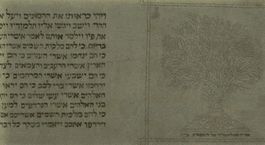
But they got me on to another tangent as well. And it made me think, that to the Jewish mind at the time, it was like a flashing sign in the background of Matthews adept work. Here is a portion of the commentary by TBP:
Just think about the separated sections of the genealogy of Matthew. It is broken up into three parts that cover 14 generations each. But why 14?
Within the written language of Hebrew, the letters are also used as their numbers, and so each letter is assigned a numerical value. The name of David in Hebrew is “דוד,” and from here you just do the math. The numerical value of the first and third letter “ד” (called dalet) is 4. The middle letter “ו” (called waw) has a numerical value of 6. Put it into your mental calculator: 4+6+4=14, the numerical value of the name of “David.”
Matthew has created the genealogy so that it links Jesus to David both explicitly and in the very literary design of the list. In fact, Matthew wants to highlight this “14=David” idea so much that he’s intentionally left out multiple generations of the line of David (three, to be exact) to make the numbers work.
Wait, Matthew has taken people out of the genealogy?
Yes, but this is not a scandal. Leaving out generations to create symbolic numbers in genealogies is a common Hebrew literary practice, going all the way back to the genealogies in Genesis (the 10 generations of Genesis 5, or the 70 descendants of Genesis 46). Ancient genealogies were ways of making theological claims, and Matthew’s readers would have understood exactly what he was doing and why.
Matthew didn’t make numerical adjustments only. He also adjusted a few letters in some names for the same purpose. For example, he changed the names of Asa and Amon to Asaph (the poet featured in the book of Psalms) and Amos (the famous prophet). Matthew is winking at us here, knowing that his readers would spot these out of place names. The point, of course, is that Jesus doesn’t just fulfill Israel’s royal hopes, but also the hope of the Psalms (Asaph) and the Prophets (Amos). Jesus is from a line of kingly succession that also culminates the rich tradition of worship and prophecy of Israel. This way, readers are thinking about all of Israel and her history as they meet Jesus for the first time. The irony is that some modern translations haven’t gotten the pun, and so have changed the names back to their “original” referents. Ah, well.
Let me just break out here and note Ligonier’s comment of the number 14 being used. They simply state:
- “fourteen” is likely intended as an aid for memorization.
This may be the only reason behind Matthew’s use of 14, but, I believe it is a bit more than just that. I tend to side a bit with Hank Hanegraaff’s comments being added as “and another reason”…
- Matthew employs the practice of gematria and orders the genealogy according to the numerical equivalent of the Hebrew letters in King David’s name (4 + 6 + 4 = D + V + D). Matthew highlights the most significant names in the lineage of Jesus, artistically emphasizing Jesus as Messiah, who forever sits upon the throne of David.
Some Christians may think this is “numerology” in some occultic sense, it is not that at all.
A word of warning however, the Kabbalistic tradition does take this to an occultic level. For instance, Christian Apologetics and Research Ministry (CARM) has this notation to their “Gematria” post:
- Though it does seem that there are some very legitimate and interesting Gematria relationships found in the Bible, we can also see that Kabbalists could take the phenomena too far in their esoteric and mystical explanations of Scripture.
I will “highlight” the portion below in one of the Biblical dictionaries noting this, as well as putting in the APPENDIX more info on Kabbalism.
gematria
Here is Biblical critic, Bart Ehrman talking about this section (yes, I paid the man to open up this section for this post. I donated to an atheist critic, lol). The second theory here is the one I think is in Matthews wheelhouse:
…..I pointed out in the previous post that Matthew presents a numerically significant genealogy of Jesus in order to show that something of major significance happen every fourteen generations: from Abraham, the father of the Jews, to David, the greatest king of the Jews: fourteen generations; from King David to the Babylonian Captivity, the greatest disaster for the Jews: fourteen generations; and from the Babylonian Captivity to the Messiah Jesus, the ultimate savior of the Jews: fourteen generations.
It’s a terrific genealogy. But to get to this 14-14-14 schema, Matthew had to manipulate the names in a couple of places, for example, by leaving out some of the generations and by counting the final set of names as fourteen, even though there are only thirteen. And so, we might wonder whether the number fourteen, in particular, was for some reasons significant for Matthew. Why not 15, or 12?
Over the years interpreters of Matthew have puzzled over the question and have suggested two, in particular, that strike me as interesting.
First, in ancient Israel, as in a number of other ancient societies where numbers had symbolic significance, the number seven was supremely important: it signified perfection or even divinity (as you’ll notice when you read the book of Revelation, for example, where seven’s turn up a lot). The ancients divided the week into seven days, probably because they believed that there were seven planets. For some ancient Jews there were seven stages in a person’s life and seven parts to the human soul; there were seven heavens, seven compartments of hell, and seven divisions of Paradise and seven attributes of God. There were seven classes of angels. And so on. Consider the words of the famous first-century Jewish philosopher Philo: “I doubt whether anyone could adequately celebrate the properties of the number seven, for they are beyond words” (On the Creation of the World, 30).
If seven is a perfect number, a number associated with the divine, what then is fourteen? Twice seven! In cultures for which numbers matter, fourteen would have been a doubly perfect number. Did Matthew set up Jesus’ genealogy to show the divine perfection of his descent?
A second theory ties the genealogy yet more closely into Matthew’s own portrayal of Jesus. In ancient languages the numbers were typically represented by letters of the alphabet, so that in Hebrew, for example, Aleph was one, Beth was two, Gimel three, etc. When you hit ten, then the next letter was twenty, then thirty, and so on; and when you hit 100 the next letter was 200, then 300 and so on. Among other things, this meant that every word had a numerical value: you could just add up the letters. (In ancient Judaism, this method of interpreting words according to their numerical value was called “gematria.”)
Matthew in particular wants to emphasize that Jesus is the Jewish messiah, the “son of David.” And what does David’s name add up to? In Hebrew there are no vowels, only consonants (which makes reading it very interesting indeed! Luckily, in the middle ages, Jewish scribes added a series of dots to the consonantal letters to indicate the appropriate vowels, so that some of us who are not experts – like me – read Hebrew only with the vowels added. But originally there weren’t any). And so David is spelled D-V-D (Daleth-Vav-Daleth). The D (Daleth) is worth 4 and the V (Vav) is worth 6. So the numerical value of David’s name is … fourteen! Has Matthew emphasized the number fourteen in Jesus’ genealogy in order to stress his Davidic roots as the messiah of the Jews?
Okay, time to bring that big word Bart used, gematria, into the Biblical definition arena… many do not know the extent of the use of this was in Matthews day. Games were even played using it.
And I wish to note, my wife, who is an accountant/finance person, loves playing what game? Sudoku. You don’t think Matthew was a numbers guy? First a shorter Biblical dictionary definition then a more in-depth one. In this Tyndale Bible Dictionary excerpt, I include their commentary partial explanation to the significance of the number fourteen.
GEMATRIA* One of the rabbinic hermeneutic rules for interpreting the OT. It consisted of explaining a word or group of words according to the numerical value of the letters or by substituting and rearranging certain letters according to a set system. By that rule of interpretation, for example, some rabbis have argued that Eliezer (Gn 15:2) was worth all the servants of Abraham put together, for Abraham had 318 servants and Eliezer’s name equaled 318 (Gn 14:14). The name Babylon is arrived at in Jeremiah 25:26 and 51:41 by substituting the last letter of the Hebrew word for the first letter of the same word.
The pseudepigraphal Epistle of Barnabas interprets the 318 servants of Abraham (Gn 14:14) as pointing to Jesus’ death on the cross, because 300 is the numerical value of the Greek letter “t,” which is cross-shaped, and 18 the value of the first two letters of the Greek word for Jesus. In the book of Revelation the number of the beast is 666 (Rv 13:18). If the number seven is considered to be the perfect number in the Bible, and if three sevens represent complete perfection, then the number 666 falls completely short of perfection.
[….]
5. In verse 6 David is called “the king.”
From these data, it is obvious that Matthew does not intend to present a strict genealogy; the arrangement is contrived, and extraneous material is included, probably for some other purpose than merely to present Jesus’ forebears. Matthew’s arrangement of the names into groups of 14, probably guided by an interest in portraying Jesus to Jews as the promised king of Israel and rightful heir to the Davidic throne, gives a definite historical movement to the genealogy by dividing it into three periods of time. These respectively highlight the origin, rise to power, and decay of the Davidic house, the last point represented by the lowly birth of the promised heir to a carpenter of Nazareth.
The 14 names in each group may be an effort to call attention to the thrice-royal character of Mary’s son by focusing on the numerical value 14 of the Hebrew letters in David’s name (d=4, v=6, d=4). This number also happens to be twice the sacred number seven, so that the whole list is composed of three sets of two sevens each. It may be, however, that the contrived groupings were merely intended to aid in memorization.
Walter A. Elwell and Philip Wesley Comfort, Tyndale Bible Dictionary, Tyndale Reference Library (Wheaton, IL: Tyndale House Publishers, 2001), 517, 519.
Here is The HarperCollins Bible Dictionary description which delves a little deeper on the subject of gematria for the studious researcher with limited resources:
gematria (gay-mah´tree-uh), the practice of assigning a numerical value to proper names or to related words and expressions. This was easily done in the ancient world because, in both Hebrew and Greek, letters of the alphabet were also used as numerals. It became commonplace for people to add up the numerical value of the letters that were used to spell any person’s name and to regard the sum of those numbers as “the number of (that) person’s name” (cf. Rev. 13:17–18). For example, if gematria were practiced with the modern-day English alphabet, an A would be equal to 1, a B would be equal to 2, and so forth. After the tenth letter, the eleventh (K) would be equal to 20, the twelfth (L) would be equal to 30, and so on until, with the twenty-first letter (U), multiples of 100 would be used. The proper name “Mark” would end up consisting of four letters with these numerical values: M = 40; A = 1; R = 90; K = 20. The sum of these numbers (40 + 1 + 90 + 20) would be 151, so in modern-day gematria, it could be said that the number of Mark’s name is 151. Today, this would seem like a code, but the whole process would have been less mysterious in the biblical world, when everyone already knew the numerical value of each individual letter. In any case, gematria became very popular in certain times and places. In the Greco-Roman world, during nt times, it often became the basis for jokes and riddles; for these to have functioned as they did at a popular level, most people would have to have known the numbers of their own names, as well as the numbers to be associated with other prominent people. Most Jews would have known that the letters in the name “David” (in Hebrew) added to 14 and most Christians would have known that the letters in the name “Jesus” (in Greek) added to 888. Likewise, the first readers of the book of Revelation probably knew that the letters in the name “Caesar Nero” (in Hebrew) added to either 666 or 616, depending on how it was spelled. Accordingly, Rev. 13:18 reveals the number of the beast to be 666 in some manuscripts and 616 in others.
The practice of gematria consists of assigning a numerical value to a word or phrase by adding together the values of the individual letters. This works in Hebrew and Greek, where the letters of the alphabet can also serve as numerals. In Greek, the marks signifying 6 and 90 were not used as letters in New Testament times.
In the Roman world, gematria became a basis for riddles, jokes, and games:
- Graffiti on a wall in Pompeii reads, “I love her whose number is 545.”
- As a political joke, Suetonius (Nero 39) indicates that the name “Nero” (Νέρων) and the phrase “killed his own mother” (ίδίαν μντέρα άπέκτεινε) have the same numerical value (1,005) when written in Greek. This was pertinent because the emperor was rumored to have murdered his mother.
In Christianity and Judaism, gematria could provide a basis for religious symbolism:
- Rabbis noted that “Eliezer’ (אליעזר), the name of Abraham’s favored servant (Gen. 15:2), has a numerical value of 318, which is the total number of servants mentioned in Gen. 14:14. Thus, Eliezer was equal to all the rest of the servants combined.
- The Hebrew letters in the name “David” (דוד) add up to 14, so that number could be accorded messianic significance: the messiah was to be the Son of David. This is probably why Matthew’s Gospel emphasizes that the genealogy of Jesus can be divided into three sets of 14 generations (Matt. 1:17).
- The Greek letters in the name “Jesus” (′Ιησογυς) add up to 888, which some early Christians found significant: 8 surpasses 7 (the number for perfection) and heralds a “new creation” beyond what God did in the first 7 days (Gen. 1:1–2:3).
Many scholars think that gematria holds the clue to resolving the puzzle of 666, the number attributed to the beast in Rev. 13:18:
- A popular spelling for the name of the emperor Nero adds up to 666 when written in Hebrew (קסרנרון = Caesar Neron). An alternate spelling (קסרנרו = Caesar Nero) adds up to 616, a variant reading for the number of the beast found in some manuscripts of Revelation.
- A designation for the emperor Domitian that sometimes appeared on Greek coins also adds up to 666: Kai. Domet. Seb. Ge. (an abbreviation for Autokratōr Kaisar Dometianos Sebastos Germanikos = Emperor Caesar Domitian Augustus Germanicus).
Over time, most Jewish and Christian groups abandoned the practice of gematria, perhaps because certain groups used numerology in connection with magic and the occult. The practice still features prominently in kabbalah and other mystical traditions.
Mark Allan Powell, “Gematria,” in The HarperCollins Bible Dictionary (Revised and Updated), ed. Mark Allan Powell (New York: HarperCollins, 2011), 316.
How can we start to dissect what Matthew was writing? By looking at the time he wrote it, to whom he was writing to, the culture and practices we know of from that time and people group, etc:
- Who was the writer?
- To whom were they writing?
- Is the choice of words, wording, or word order significant in this particular passage?
- What is the cultural, historical context?
- What was the author’s original intended meaning?
- How did the author’s contemporaries understand him?
- Why did he say it that way?
The above in the 2023 section goes a long way — I believe — to add more context to the issue of Matthews 14/14/14. So, all this to say that Matthew was throwing in that “flashing Neon Sign” that was saying three times:
David – David – David
APPENDIX
KABBALISM
This section is not important to the above… I am place carding this here as my first dealing with the topi/issue of Kabbalism. The WATCHMEN FELLOWSHIP has a good short definition of it:
- Kabbalah: (Various spellings) Mystical Jewish teachings intermingled with teachings of gnosticism, Neoplatonism, magic and the occult. The word Kabbalah means secret oral tradition and was coined by an eleventh century Spanish philosopher, Ibn Gabirol. The philosophy developed in Babylon during the middle ages from earlier Hebrew speculation and numerology. An early Kabbalist, Moses de Leon, developed and systematized the philosophy in his thirteenth century work, The Book of Zolar (sometimes spelled Zohar meaning “Splendor”).
Here is the most accessible post on Kabbalism for the layman via GOT QUESTIONS:
Kabbalah, also spelled Kaballah, Qabalah, or Cabalah, developed between the 6th and 13th centuries among the Jews in Babylonia, Italy, Provence, and Spain. The word “Kabbalah” means “to receive” and refers to revelation from God received by Jews and passed to succeeding generations through oral tradition. The word was first used by mainstream Judaism but later came to refer to those who believed that only a select few were given the secret knowledge from God as to the “true” meaning of Scriptures. Kabbalah uses occult practices and is considered to be a cult.
Kabbalah closely resembles some of the beliefs held by the Greek Gnostics in that both groups believed that only a select few were given deeper understanding or knowledge. Also, Kabbalah teaches that “emanations” from God did the work of creation, denying that creation was a creative act directly from God (Genesis 1). With each descending emanation, the emanation became farther away from God. The final emanation took the personal form of angels.
[….]
Kabbalah, like all false doctrine and religions, denies the deity of Christ and the necessity of faith in Him as the only means of salvation (John 14:6). Jesus is God in the flesh, and He came to die for the sins of all who would believe in Him. If an individual trusts in Christ—that He is God (John 1:1-3) and paid for sin (Romans 8:3)—then that person is forgiven and becomes a child of God (John 1:12).
They have a lot in common with Gnostics I doodled this explanation of “emanations” during a very long conversation with actor Michael Berryman in discussion about [among other things] another modern day Gnostic religion, Freemasons:
Like Gnostics and Freemason and followers of the other New Age religions, Jesus is not Divine, God. Madonna is one of the more famous celebrities to “dabble” in it’s practices.
New York: `Material Girl` Madonna has been promoted to the highest level that can be achieved without being ordained, at the Kabbalah Church.
According to Ratethemusic.com, the singer, who is a staunch follower of the mystical Jewish religion, was promoted to an upper category of Kabbalah followers in a ceremony conducted by the Kabbalah Centre founder Rabbi Berg.
“Her teachers think she has reached the pinnacle of spiritual understanding. To Madonna this is the best achievement of her life,” a source said.
It was under Madge’s influence that celebrities like Demi Moore and Britney Spears became attracted towards Kabbalah.
- There is a pretty good 1920 definition of this esoteric, “New” Age occultic tradition by Lewis Spence in his Encyclopedia of Occultism. He is not a Christian source FYI. (I PDF’ed It) It does get into the weeds a bit, and is dated.
- The Christian Research Institute tackles it a bi in their article “What Is Kabbalah?“
- Christian Apologetics and Research Ministry (CARM) has quite a few articles to dissect Kabbalism.
A decent covering of the topic:
The Messianic Movement is a broad term to refer to Jewish believers in Jesus. There are many Messianic movements today such as Jews for Jesus and others. However, within the Messianic Movement there are also some who teach heretical doctrines like the cults. Among some of these heretical doctrines is a denial of God’s compound unity (God is Father, Son, and Holy Spirit). Dr. Tony Costa interviews Dr. Igal German in a series of questions related to the Messianic Movement. Dr. Igal German is a Jewish believer in Jesus.

Andrew Klavan Gives His Testimony (One For Israel)
(Read more at BISHOP’S ENCYCLOPEDIA) …. Klavan got baptized at the age of fifty. This frightened him given his nominal Jewish background,
“One of my biggest fears confronting baptism—took me five months to work through it—was I didn’t want anyone to think I was turning my back on Jews, trying to escape my Jewish identity. The default mode with some Jews is to assume you’re trying to “pass as gentile” or blend in or that you hate your Jewishness and are joining the enemy. All understandable, because the Jews are the most mistreated group of people on the face of the planet and some of that trouble has come out of Christian sources, which stinks. Oddly, though, accepting Jesus made me feel more Jewish than I ever had, religiously at least. I had no connection to the Old Testament particularly, until I accepted the New.”
Today Klavan is an outspoken Christian and has since authored a book called The Great Good Thing: A Secular Jew Comes to Faith in Christ (2016).
Ben Shapiro Interview of Klavan
Author, screenwriter, and Daily Wire host Andrew Klavan joins me to discuss the craft of writing novels, how he went from being “intellectually agnostic” to deeply religious, and why he decided to out himself as a conservative Christian in Hollywood.

A New Years Miracle Many Years Ago (One For Israel)
Born in 1944 Rivka Lazarowitch endured great trials to follow her Messiah Yeshua, and today she stands with Him in Glory. Rivka has passed from this life to life eternal, and heaven is lit up a little brighter by her smile. Join us as we celebrate her life, the testimony of Her Messiah and the Joy of her salvation. Help celebrate her life by sharing her story of faith.
